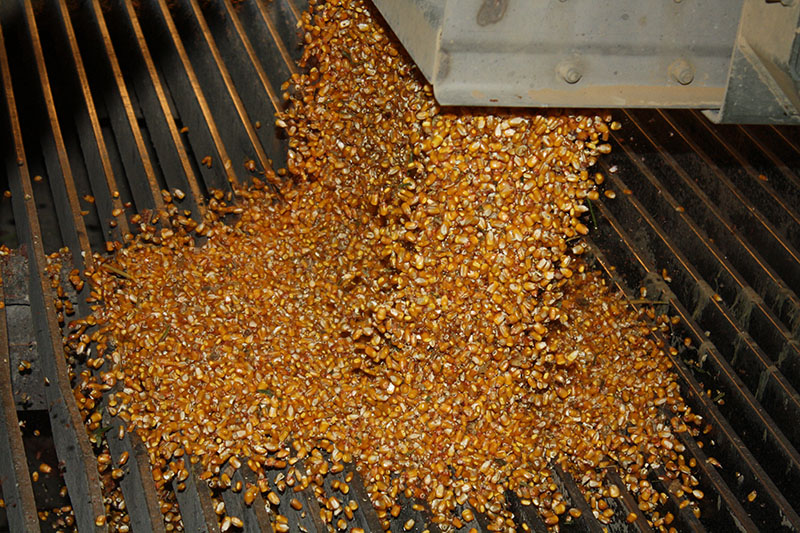Corn Yield Contest Analysis: What Has Driven Yield in Last 6 Years?
Corn Yield Contest Analysis: What Has Driven Yield in Last 6 Years?

The Kentucky Corn Yield Contest is organized jointly by the University of Kentucky and the Kentucky Corn Growers Association. The yield contest can provide valuable insights into the highest-yielding corn fields across the state. A single year of the contest is subject to unusual events of the year, such as 2024, where some areas of the state had adequate rainfall, and other areas suffered from drought. We chose to analyze the last six years of the contest. By analyzing contest entries from 2019 to 2024, we can identify key management practices that potentially contribute to top-tier yields.
We carefully examined management strategies alongside meteorological data, including rainfall, temperature, and solar radiation. With yield contest data, we cannot compare a single change in one practice and how it affects yield. However, we can run a more complex or holistic approach where we analyze how both management practices and weather conditions influence yield. With this approach, we were able to analyze all production practices provided by the farmers on each entry form.
When analyzing the effects of management practices only, planting population emerged as the primary driver of yield differences in the contest. Farmers who targeted seeding rates between 35,000 and 37,500 plants per acre achieved a significantly higher median yield—approximately 20 bushels per acre more than those who planted at lower seeding rates (Figure 1). Interestingly, increasing seeding rates beyond 37,500 plants per acre did not result in further yield gains.
Figure 1: Conditional inference analysis reveals planting population to be key in determining yield variability in corn yield contest. In this analysis, corn populations above 35,859 plants per acre had higher yields. The graph displays box and whisker plots. Each box contains 50% of the data observed. The solid line in the middle of the box is the median yield. The median is just the middle value between all yields listed high to low. The dots are outliers. Generally, a smaller box suggests less variability. In this example, the box and median are both higher for the scenario on the right (the higher plant population).
In the second scenario, the effects of only meteorological variables were taken into consideration. Solar radiation and precipitation appeared to drive corn yield in some interesting ways. When average daily solar radiation in August was below 24.64 w/m², the total solar radiation in July became the dominant factor influencing yield. If July’s solar radiation exceeded 21.6 w/m², the median yield was significantly higher than when radiation levels were lower. However, when August solar radiation exceeded 24.64 w/m², April precipitation became a key factor influencing yield. In this scenario, higher April rainfall was associated with lower median yields compared to drier conditions (Figure 2).
Figure 2: The effect of meteorological conditions on corn yield in the corn yield contest as indicated by a conditional inference tree analysis. The first separator was solar radiation in August. If solar radiation in August was less than 24.642 w/m2, then July solar radiation above 21.585 w/m2 increased corn yields. If solar radiation in August was above 24.642 w/m2, then precipitation in April below 4.48 inches increased corn yields.
Lastly, when analyzing the combined effect of management practices and meteorological conditions, the weather-related patterns remained consistent. However, in years when April precipitation exceeded 4.48 inches, harvest population played a critical role in mitigating yield losses. Fields with a harvest population above 33,500 plants per acre had better yields compared to those with lower plant populations (Figure 3).
Figure 3: The effect of meteorological conditions and management practices on corn yield in the corn yield contest as indicated by a conditional inference tree analysis. If solar radiation in August was above 24.641 MJ/m2 and April precipitation was above 4.48 inches, then harvest populations above 33,500 plants per acre had the highest yields.
What all of this means
Lower solar radiation in August suggests increased cloud cover and sufficient rainfall. In years when August had fewer sunny days, total solar radiation (both under clear and cloudy skies) in July became a key factor driving yield. This suggests that July provided enough light to support photosynthesis, but frequent cloud cover could have also meant periodic rainfall, creating an ideal balance of moisture and radiation. The best yields were achieved when August was not excessively dry and July had both adequate solar radiation and frequent showers, ensuring optimal photosynthesis and grain fill.
On the other hand, when August had higher solar radiation under clear skies, it likely meant fewer cloudy days and potential drought stress. In such cases, early planting (in April) allowed corn to progress through critical growth stages before the onset of late-season drought. However, if April had excessive rainfall, delaying planting until May, then a harvest population above 33,500 plants per acre helped mitigate yield losses.
This analysis would suggest that if a farmer is delayed until May to plant corn because of a wet April, corn populations should be increased to ensure sufficient ear production to maintain yield.
Citation: Shamim, M.J., Lee, C., 2025. Analysis What drives Yield in the last 6 Years of the Corn Yield Contest. Kentucky Field Crops News, Vol 1, Issue 3. University of Kentucky, March 14, 2025.

Dr. Mohammad J. Shamim, UK Extension Associate Grain Crops
(859) 539-1251
mshamim11@uky.edu

Dr. Chad Lee, Director- Grain & Forage Center of Excellence
UK Grain Crops Specialist
(859) 257-3203
Chad.Lee@uky.edu
